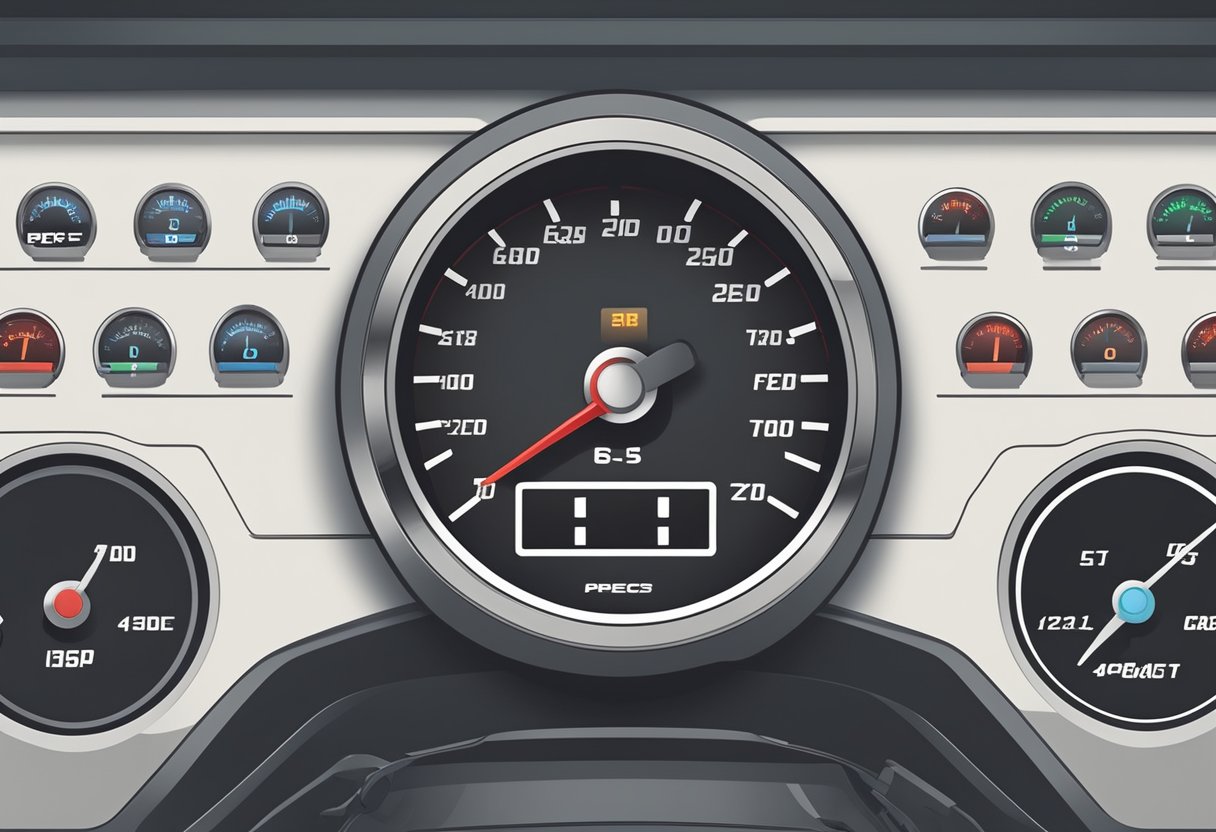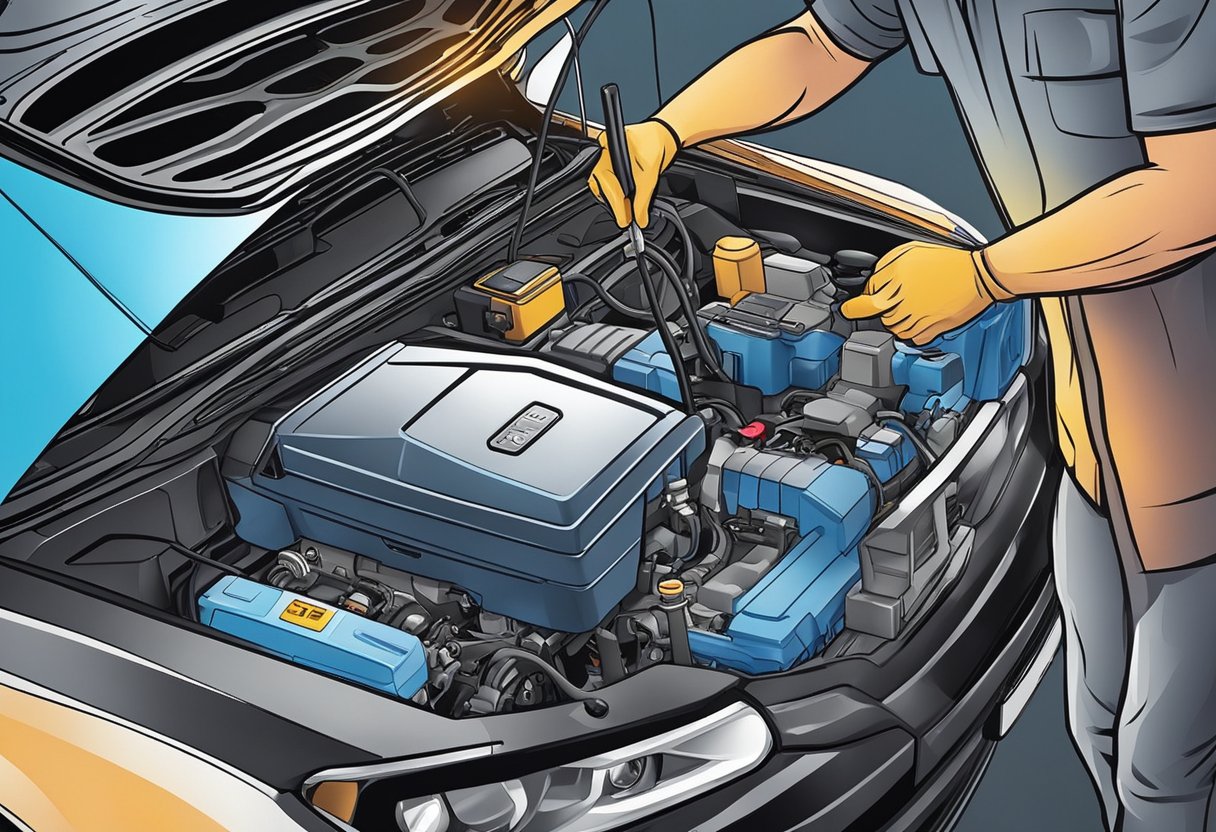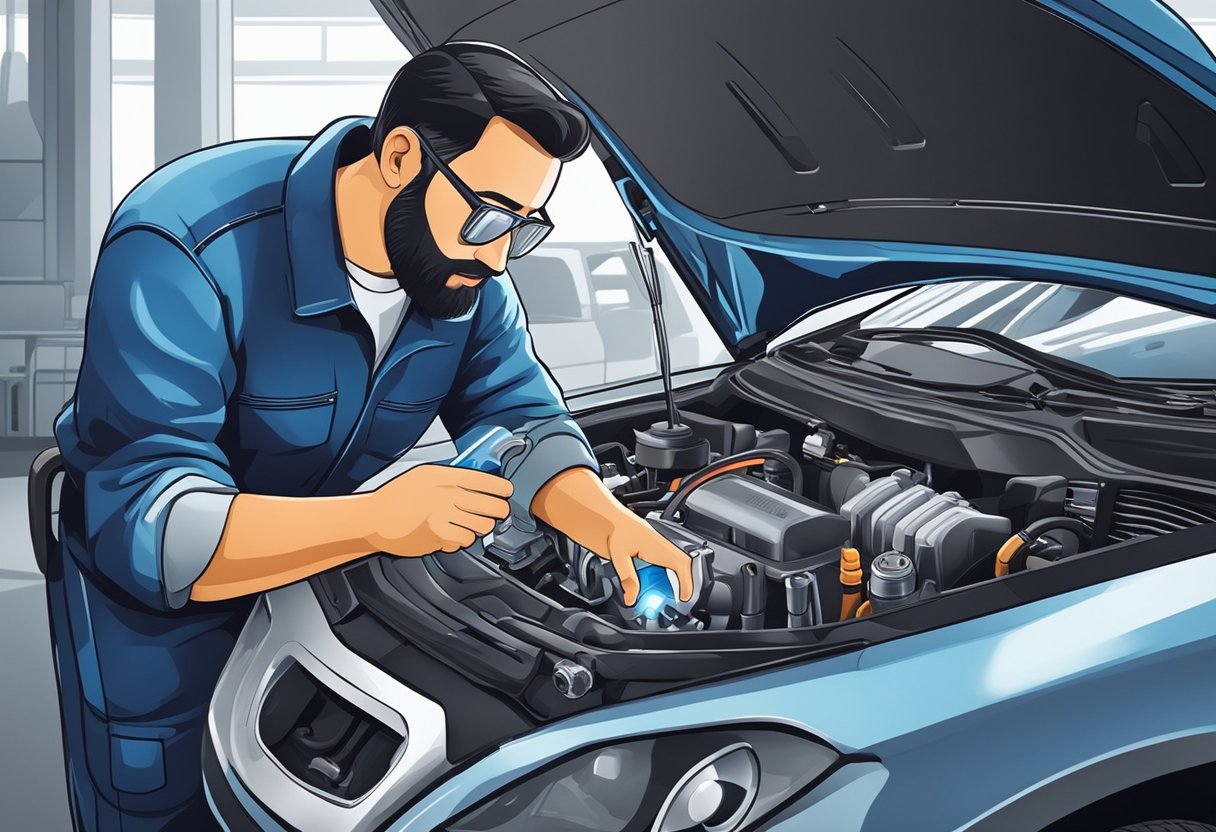Navigating the P0115 code can be a daunting task for any car owner. The code is related to the coolant temperature sensor, which is responsible for monitoring the temperature of the engine coolant. When the sensor detects a problem, it triggers the P0115 code, which can result in a check engine light and other issues.
Understanding coolant temperatures is crucial for any vehicle owner, as it can prevent major engine damage and improve fuel efficiency. The coolant temperature sensor is a critical component of the engine’s cooling system, and it plays a vital role in maintaining the engine’s temperature. In this article, we will decode the P0115 code and help you understand what it means and how to fix it.
Understanding the P0115 Code
Definition and Function
The P0115 code is a diagnostic trouble code (DTC) that indicates a problem with the engine coolant temperature (ECT) sensor circuit. The ECT sensor is responsible for monitoring the temperature of the engine coolant and sending that information to the engine control module (ECM). This data is used to adjust the fuel injection timing and ignition timing to optimize engine performance and efficiency.
Common Causes of the P0115 Code
There are several common causes of the P0115 code, including:
- A faulty ECT sensor: If the ECT sensor is malfunctioning or has failed, it may send incorrect data to the ECM, triggering the P0115 code.
- Wiring issues: Damage to the wiring or connectors in the ECT sensor circuit can cause a loss of signal or incorrect data to be sent to the ECM.
- Failed thermostat: A failed thermostat can cause the engine to run hotter or cooler than normal, which can trigger the P0115 code.
- Low coolant level: If the coolant level is low, the ECT sensor may not be able to accurately measure the temperature of the coolant, triggering the P0115 code.
If you experience a P0115 code, it is important to address the issue promptly to avoid potential engine damage or decreased fuel efficiency. Consult with a qualified mechanic to diagnose and repair the issue.
The Role of Coolant Temperature in Engine Management
The coolant temperature sensor is a crucial component of your vehicle’s engine management system. Its primary function is to monitor the temperature of the engine coolant and provide feedback to the engine control module (ECM) or powertrain control module (PCM). This information is used by the ECM/PCM to control various engine functions, including fuel injection, ignition timing, and emissions control.
When the engine is cold, the ECM/PCM will typically increase the fuel injector pulse width to provide a richer fuel mixture. This is necessary because a cold engine requires more fuel to start and run smoothly. As the engine warms up, the ECM/PCM will gradually reduce the fuel injector pulse width to maintain the correct air/fuel ratio.
The coolant temperature sensor also plays a critical role in emissions control. The ECM/PCM uses the sensor data to determine when the engine is warm enough to enter closed-loop fuel control. In closed-loop mode, the ECM/PCM adjusts the fuel mixture based on feedback from the oxygen sensor(s) to maintain the correct air/fuel ratio. This results in lower emissions and improved fuel economy.
In addition to controlling fuel injection and emissions, the coolant temperature sensor is also used by the ECM/PCM to adjust ignition timing. The ECM/PCM will typically advance the ignition timing as the engine warms up, which improves combustion efficiency and power output.
Overall, the coolant temperature sensor is a vital component of your vehicle’s engine management system. If you receive a P0115 code, it’s important to diagnose and repair the issue promptly to avoid potential engine damage and poor performance.
How Does Understanding the P0115 Code Help in Solving the P0170 Code?
Understanding the P0115 code helps in solving the P0170 code by unraveling fuel trim mysteries. The P0115 code indicates a problem with the engine coolant temperature sensor, which can affect the fuel mixture. This insight can lead to diagnosing and fixing issues related to the P0170 code, which points to a fuel trim malfunction.
Diagnostic Procedures for the P0115 Code
When you encounter a P0115 code, it is important to follow a diagnostic procedure to accurately identify the root cause of the issue. This will help you avoid unnecessary repairs and save time and money. Here are some steps to follow:
Initial Inspection
The first step in diagnosing a P0115 code is to perform a visual inspection of the engine coolant temperature (ECT) sensor and its wiring. Look for any signs of damage, such as a broken or corroded connector, frayed wires, or damaged insulation. Make sure the sensor is properly mounted and that its electrical connections are secure.
Next, check the coolant level and condition. Low coolant levels or dirty/contaminated coolant can cause inaccurate readings from the ECT sensor. If necessary, perform a coolant flush and refill to ensure the system is clean and filled to the proper level.
Advanced Diagnostic Tests
If the initial inspection does not reveal any obvious issues, you may need to perform more advanced diagnostic tests. Here are some tests to consider:
-
Use a scan tool to check for any other related codes, such as a P0116 or P0117. This can help narrow down the issue and identify any additional components that may be contributing to the problem.
-
Use a multimeter to test the ECT sensor’s resistance. Compare the readings to the manufacturer’s specifications to determine if the sensor is faulty.
-
Check the voltage and ground circuits for the ECT sensor using a wiring diagram. If there is no voltage or ground, you may need to trace the wiring back to the PCM and check for any breaks or shorts.
-
Perform a system test using a diagnostic tool to check the entire engine cooling system. This can help identify any other issues that may be affecting the ECT sensor’s readings.
By following these diagnostic procedures, you can accurately diagnose and repair any issues related to the P0115 code. Remember to always refer to the manufacturer’s specifications and follow proper safety procedures when working on your vehicle.
Troubleshooting and Repairing the P0115 Code
Step-by-Step Repair Guide
If you’re experiencing the P0115 code, it’s important to troubleshoot and repair the issue as soon as possible to avoid further damage to your vehicle. Here is a step-by-step guide to help you resolve the issue:
-
Check the coolant level: Low coolant levels can trigger the P0115 code. Make sure your coolant level is at the appropriate level.
-
Inspect the coolant temperature sensor: The coolant temperature sensor is responsible for monitoring the engine’s temperature and sending the information to the engine control module. If the sensor is faulty, it can cause the P0115 code. Inspect the sensor for any signs of damage or wear.
-
Test the coolant temperature sensor: Use a multimeter to test the resistance of the sensor. If the resistance is out of range, replace the sensor.
-
Inspect the wiring: Check the wiring and connectors for any damage or corrosion. Repair or replace any damaged wiring.
-
Check the engine control module: If the above steps do not resolve the issue, there may be a problem with the engine control module. Have a professional mechanic diagnose and repair the issue.
Replacement Parts and Tools
To repair the P0115 code, you may need to replace the coolant temperature sensor or any damaged wiring. Here are the replacement parts and tools you may need:
- Coolant temperature sensor
- Multimeter
- Wire strippers
- Wire connectors
- Electrical tape
- Socket set
Make sure to purchase high-quality replacement parts to ensure the longevity of your repairs.
Preventative Measures and Regular Maintenance
To avoid encountering the P0115 code and potential engine damage, it’s important to regularly maintain your vehicle’s cooling system. Here are some preventative measures you can take:
- Check the coolant level regularly and top it off as needed. Low coolant levels can cause the engine to overheat and trigger the P0115 code.
- Inspect the cooling system for leaks, cracks, or damage to hoses, belts, and other components. Any issues should be addressed promptly to prevent further damage.
- Replace the thermostat at regular intervals, as recommended by the manufacturer. A faulty thermostat can cause the engine to overheat and trigger the P0115 code.
- Keep the radiator and other cooling system components clean and free of debris. Dirt and debris can reduce the efficiency of the cooling system and cause the engine to overheat.
- Use the recommended type and amount of coolant for your vehicle. Mixing different types of coolant or using too little can cause the engine to overheat and trigger the P0115 code.
By following these preventative measures and regularly maintaining your vehicle’s cooling system, you can avoid encountering the P0115 code and ensure your engine stays cool and running smoothly.
As an Amazon Associate we earn from qualifying purchases.













